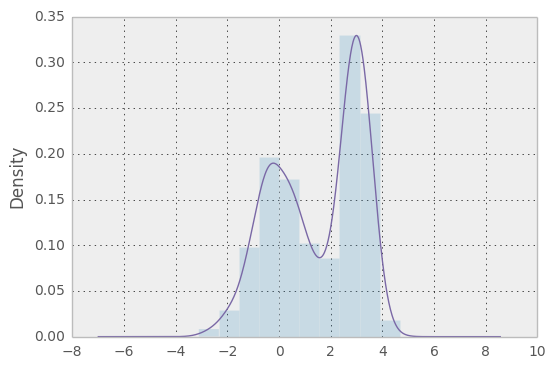Pandas is a library of the Python programming language, entirely dedicated to Data Science. Find out what this tool is used for, and why it is essential for Data Scientists.
Created in 1991, Python is the most popular programming language for data analysis and Machine Learning. Several advantages explain its success with Data Scientists.
First of all, it is a very easy-to-use language. Even a beginner can quickly produce programs thanks to its simple and intuitive syntax.
This language federates a vast community, having created many tools for Data Science. There are for example tools for Data Visualization such as Seaborn and Matplotlib, and software libraries such as NumPy. One of these libraries is Pandas, designed for data manipulation and analysis.
What is Pandas?
The Pandas open-source software library is specifically designed for data manipulation and analysis in Python. It is powerful, flexible, and easy to use.
Thanks to Pandas, the Python language can finally be used to load, align, manipulate, or merge data. The performance is particularly impressive when the back-end source code is written in C or Python.
The name “Pandas” is actually a contraction of the term “Panel Data” for data sets that include observations over multiple periods. This library was created as a high-level tool for analysis in Python.
The creators of Pandas plan to evolve this library to become the most powerful and flexible open-source data analysis and manipulation tool in any programming language.
In addition to data analysis, Pandas is widely used for data wrangling. This term encompasses methods for transforming unstructured data to make it usable.
In general, Pandas also excel at processing structured data in the form of tables, matrices, or time series. It is also compatible with other Python libraries.

How does Pandas work?
Pandas is based on “DataFrames“: two-dimensional arrays of data, where each column contains the values of a variable and each row contains a set of values from each column. The data stored in a data frame can be numbers or characters.
Data Scientists and programmers are familiar with the R programming language for statistical computing and use DataFrames to store data in very simple grids for review. This is the reason why Panda is widely used for Machine Learning.
This tool allows you to import and export data in different formats like CSV or JSON. On the other hand, Pandas also offers Data Cleaning features.
This library is very useful for working with statistical data, tabular data like SQL or Excel tables, time series data, and arbitrary matrix data with row and column labels.
What are the benefits of Pandas?
For data scientists and developers, Pandas bring several advantages. This library makes it easy to compensate for missing data.
It is a flexible tool, as columns can be easily inserted or removed within DataFrames. The alignment of data with labels can be automated.
Another advantage is a powerful data grouping tool that allows split-apply-combine operations to be performed on datasets to aggregate or transform them.
It is very easy to convert data indexed differently in other Python and NumPy structures into DataFrame objects. Similarly, data can be indexed or sorted using an intelligent label-based system.
Datasets can be intuitively merged, and flexibly restructured. I/O tools simplify the loading of data from CSV files, Excel files, databases, or the loading of data in HDF5 format.
Time series features complete the picture, including date range generation, frequency conversion, or moving statistical windows.
These numerous strong points make Pandas a must-have library for Data Science in Python. It is a very useful tool for Data Scientists.

How do Data Scientists use Pandas?
Some programming languages are traditionally used in scientific environments or by corporate research and development teams. However, these languages often create problems for Data Scientists.
Python overcomes most of these limitations. It is an ideal language for the different stages of data science: cleaning, transformation, analysis, modeling, visualization, and reporting.
Its interface is pleasant, the documentation is complete, and the use is relatively intuitive. The popularity of Pandas is also linked to its age. It is the first library of its kind to have been created or at least one of the first.
Moreover, it is an open-source tool and many people have contributed to the project. This is what has made it so successful.
Pandas, NumPy, and scikit-learn: 3 Python libraries for Data Science
Besides Pandas, there are other Python software libraries dedicated to Data Science. NumPy is a mathematical library allowing you to implement linear algebra and standard calculations in a very efficient way.
Note that Pandas is based on NumPy. Many data structures and features of Pandas come from NumPy. These two libraries are closely related to each other and are often used together.
On the other hand, Scikit-learn is the reference for most Machine Learning applications in Python. To create a predictive model, we generally use Pandas and NumPy to load, analyze and format the data to be used. This data is then used to feed the model from scikit-learn. This model is then used to make predictions. Thus, Pandas, Numpy, and Scikit-learn are three tools commonly used in Data Science.

Alternatives to Pandas
There is no real alternative to Pandas in Python. On the other hand, R language users can turn to the “Dplyr” library.
The concept is similar to Pandas. This library is dedicated to data manipulation and allows for simplifying and accelerating some functionalities.
Which companies use Pandas?
Any company using Python for data analysis needs Pandas and its versatility. All companies handling tabular data will find this tool a valuable help.
On the other hand, Pandas is not necessarily adequate for working with incompatible data formats such as images, audio files, or certain textual data. The structure of these data types is not suitable for use with Pandas. It is therefore important to consider the type of data to be processed before choosing a tool.
This library is widely used among companies processing relational customer data and transaction data to analyze trends and model behavior.
Similarly, many real estate companies use it to analyze large quantities of prices and characteristics to determine trends and create predictive models.
How to learn to use Pandas?
After learning the basics of Python, it is very easy to learn how to use Pandas. Mastering these two tools allows you to work with any type of data.
The Pandas library is the easiest way to format a data set and analyze it to extract valuable information. For a data scientist, it is simply a must-have.
Learning to use Pandas offer many opportunities, as this skill is sought after by companies. Companies in all sectors are using Data Science more and more, and therefore need to surround themselves with experts who know how to use the appropriate tools.
It is very easy to master the most basic operations with Pandas. However, knowing how to use the more advanced features can be complex and time-consuming. This is the case for aggregate calculations, DataFrames merging, or time series processing.
To learn how to use Pandas, you can start by consulting the official documentation. This is a good way to discover the basics and understand how it works.
There are also code repositories containing online challenges for Pandas. These “repos” can allow you to test your skills over time and as you progress.
Websites like Kaggle allow you to discover datasets and view how others have used Pandas to analyze them. This provides a better understanding of how this library is used to work with real-world data.
Starting your project with Pandas is a great way to progress. Simply find a data set, and try to analyze it with Pandas. By choosing data that interests you, this work will seem more concrete and you will learn faster. Correct your mistakes little by little, so you can learn from them and improve.
To learn how to use Pandas and all its subtleties, you can choose the DataScientest trainings. This Python library is part of our Data Scientist, Data Analyst, and Data Management courses.
Our different courses allow you to acquire all the skills required to work in the field of Data Science. At the end of the course, you will be ready to work and will receive a diploma certified by the Dauphine-PSL University.
All our courses can be taken as BootCamp or Continuing Education. The courses are taken online, at your own pace, on a Cloud platform coached by professionals.











